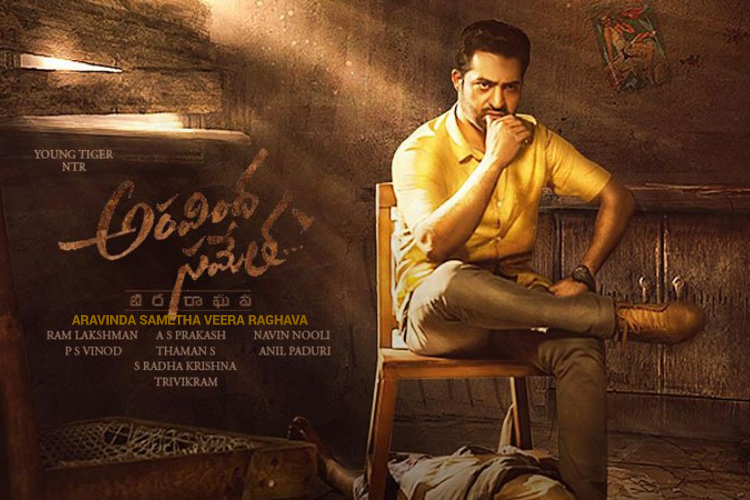
FOREIGN CINEMA: PAYING ATTENTION
With the significant decline in the quality of Hollywood productions, paying attention to foreign cinema as alternative entertainment is becoming more and more interesting to do.
Hollywood has all the showing space in cinemas worldwide. The possibility to have foreign productions showing in theaters remains small. If there are any they listed are only shown for a copy of days and they are more expensive than the regular showings.
Streaming platforms give us, the general audience, the opportunity to watch foreign films without the need to overspend and it’s available for a longer period so you can rewatch them wherever you want. Foreign TV series are more accessible as well. Now the problem with foreign entertainment is that what you may be looking for sometimes can be difficult to find if you don’t know where to look.
THE INDIAN FILM INDUSTRIES
Many years ago, I started watching Bollywood movies on a very limited scale. I went by what the Indian critics said and looked whether it was available on YouTube or if there was a DVD to buy. For a long time, Bollywood movies were the only accessible Indian movies. At that time, I thought that was Indian cinema and just assumed based on the reviews that it is just a way of movie-making that is not for everyone. I was so wrong.
There are more industries in the country I just didn’t know where to find their content including Tollywood, Kollywood, Sandalwood, and Mollywood. There are many more from what I understand. Bollywood is the most popular of the group, but it doesn’t produce the best content-driven stories. Everything is commercialized and glamourized. If you are looking for content-driven heartfelt stories, other industries do a better job. Thanks to the rise of streaming platforms these have become more accessible to international audiences.
Yes, music is a very important element in Indian cinema but I learned that not everything is like a traditional Bollywood-style musical. Especially in the regional industries, you will find stories told in interesting ways. They also do copy Bollywood but a large section of filmmakers have their own unique style.
HOLLYWOOD AND BOLLYWOOD: SIMILAR ISSUES
Bollywood seems to have the same problem Hollywood has that they have no idea how to write and portray the common man. Most of the time the portrayal comes off as a caricature. Unless the filmmaker or actor has that working-class background, which is very rare nowadays. When searching about Bollywood you will probably find some articles about the existing “Nepotism” and self-entitlement of Bollywood stars.
In the last decade, the most successful have been those that have family working within the industry or have a godfather that propels them to stardom. It looks very easy to me to survive in an industry when you have a support system. The working hard part is not comparable to the one who also works hard and achieves success without a support system. That is admirable.
It seems that there is a similar problem with the critics in India where they gave favoritism and are lenient to certain Bollywood movie stars especially those with influence. These are critics that have knowledge of international cinema and should be giving a review with some added value to the reader.
When looking into the other industries they always seem too harsh with their reviews. They praise the roles of Hollywood actors like Stallone or Statham when they play unbeatable action heroes in B-rated movies but can’t accept it when it’s done in their own film industries? How come it’s not judged the same?
You will find some action movies are centered on the action and the hero has a single mission to accomplish, that is the movie. I see the same is done in the regional film industries but with some music and romance thrown in the mix most of the time. It doesn’t always click but most of the time the films are very entertaining.
Compared to Hollywood and Bollywood there is something about how the regional film industries portray their stories and their dialogues in films that makes them films with heart. At times even the films with the harsh criticism still manage to be a satisfying watching experience.
They often cover themes or present dialogues that wouldn’t fit in a Hollywood or Bollywood production. Themes such as the protection of the weakest including women and children, revolt against corruption in politics, corruption in the police force and the healthcare industry, the importance of proper education, showing the struggles of the lower class on how they manage to survive, and inspire others to be better, choose to defend others, elevate others and stand by them.
It makes me very confused, so I stopped relying on them for any guidance and started looking into what regular bloggers and vloggers were saying. It has been better this way. I found many movies that even though they are not beloved by the critics are beloved by the masses.
A successful movie to me is one with a story that grabs your attention so much that you want to see it again and again. You will find a lot of these in the several Indian film industries. Bollywood movies are known to belong like 3 hours long with an intermission/break during the first 1.5 hours. The regional film industries vary in running time between 2 to 3 hours but they also have intermissions. For International audiences, Indian films can be found on Netflix, Amazon Prime Video, and ZEE5.
STAYING UNIQUE OR BECOMING GENERIC
I think the effect of healthy competition and collaboration is that it generates great content. Each film industry is unique and should stay unique. In my opinion, that is what makes it interesting to watch the content working together is great, but a synergy of all industries would be chaotic. Each industry seems to have its own goals, values, and views. I based this based on how unsuccessful the synergy has been on the TV side with the Star shows.
In the past, I remember there used to be several channels under the Star banner, and each had its unique style. The shows were not perfect, but they were somewhat consistent in maintaining their style. They used to be available on YouTube. Shows like Dill Mill Gaye, Chhoona Hai Aasman, Miley Jab Hum Tum at least got you interested in the stories.
I don’t know what is happening now, but it seems like there are several shows within a show. Sometimes it’s because the protagonist resigned or didn’t extend their contract. Sometimes the story changes with the replacement of the protagonists and when they are not the center of the story anymore. the point is there is no consistency or coherence.
You also have cancellation of shows with unconventional stories like The Empire and Zindagi Mere Ghar Ana. New concepts and styles don’t have a long-lasting life. But then how difficult would it be to innovate if the same formula is used? The funny thing is the same people that criticize the “traditional formula” of TV making are not open to new formulas which automatically keep the traditional formula running. They still have to watch it in order to criticize it so it still gets the watch hours. How about giving those watch hours to something different?
In my opinion, there is no need to watch all the seasons of any series like you would any normal series. Just look out for the storyline you’re interested in and watch those episodes. Some shows are just way too long, some have like 1000 episodes, so it is a significant time-consuming investment, and most of the time it’s not worth it.
Let’s look at Imlie for example. I did not follow what you would consider the first season when a teenager, Imlie, was married to a guy, Aditya who is almost twice her age. I started watching when she first sees Aryan when he almost run her over. Imlie is basically on her own in the city. Due to circumstances, she can’t rely on her “husband”. Aryan hires her to work for him, motivates her to do her best, and is always there to protect her. Similar to what Maan did with Geet in Geet-Hui Sabse Parayi. Aryan also has some similarities with Arnav Singh Raizada from Iss Pyaar Ko Kya Naam Doon. Again it seems like there are several genres within this season from drama to comedy to superhero action. I watched up until the bomb blast and the kidnapping after that I stopped watching.
I’m afraid of everything becoming a generic formula and losing its soul and heart. I would hate to see that happen when all film industries become united. It would be awesome if they would find a way to come together without compromising their unique vision.
THE NEED FOR HEALTHY COMPETITION
Hollywood is just taking advantage of the recent hype for Indian cinema (Bahubaali 2, Dangal, RRR, K.G.F Chapter 2). Yes, there have been Indian actors that joined Hollywood before, but these have been given roles below their capabilities or have been part of nonpopular/forgettable productions except for a few actors like the late Irrfan Khan known for his roles in The Amazing Spiderman, Jurassic World, and Inferno. There are a few actors that manage to give a great performance and stand out even when the role they are given is small or when the film is mediocre. He was one of them. When he is the protagonist, it is even more amazing: The Lunch Box, Paan Singh Tomar, Maqbool, and Piku, to name a few from his repertoire.
It’s not just a Hollywood thing. The same happens in Bollywood when someone from another Indian film industry tries to join. Talented non-Bollywood actors reach a certain ceiling level when they are working in Bollywood. You watch their performance in the regional movies and the ones from their Bollywood films and sometimes there is a big difference. In addition to that, they don’t get the same promotion and support as others do.
This is why I think they should stay and help their own industries grow rather than pursue a dream that is below their standards. The internet has given them a global platform now and they should take advantage of it. Hollywood and Bollywood just need to learn to deal with competition and rearrange their ways of acquiring and cultivating talent.
SOUTH KOREA AND THE COMPETING NATURE OF ASIA
South Korea has been producing interesting content and made them available online. I’m quite impressed with the quality. They also have problems in their industry, but it doesn’t seem to affect the quality of their content. I noticed that in Asia the remake phenomenon has been also in full force, but it is very different from the U.S and Latin America.
Each region or country does a remake based on its culture and customs. Sometimes the story and even the clothing are the same as the original, but some things are different. They also try sometimes to make changes to outdo what was done before.
So, you’ll have a South Korean version of a Taiwanese series that was a remake of a Japanese series. Usually, the remake projects are mostly done in South Korea, Taiwan, Thailand, the Philippines, and Japan. Japan usually prefers to make series and movies based on manga, but they do make remakes as well.
India also has remake fever. They usually do remakes based on their own content where you have several industries doing remakes of each other. However, they are not limited to local productions they also do remakes of Latin America like Betty La Fea (Jassi Jaissi Koi Nahin).
They also started to do remakes where the Indian culture and religion are not much prominent like the remake of Fatmagül. Mainland China also does remakes, especially from Taiwanese series portraying their culture and ideologies in their content either you take it or you don’t.
On one hand, I wish for countries to produce content based on their culture and beliefs. On the other hand, I don’t wish for them to have to be explanatory all the time as there will always be ignorant people getting offended for nothing. Ideally, it would be great for things to be presented with some explanations in the story, but I understand that it doesn’t always fit in the storytelling. Most content from Asia can be found on Netflix, YouTube, and Rakuten Viki.
THE LATIN AMERICAN AND CARIBBEAN CINEMA
The Latin American film industry is one I know almost nothing about unlike the TV industry. I don’t mean Latino films made in the U.S. but properly made in Latin American countries. I’ve watched plenty of telenovelas but with films, unfortunately, there are just a few I can say that I was able to watch properly at the cinema.
Now there is plenty available on streaming platforms such as Netflix and TubiTV but I would love to see more content available in cinemas as well. Caribbean cinema is very limited as well but I would love to see it grow alongside other industries. Create great content and be the competition that is so desperately needed.
THE EUROPEAN CINEMA
To be honest I am not familiar with most of the European cinema that is not part of or works with Hollywood. Movies such as The Seventh Seal (1957) and Wings of Desire (1987) from Germany, Paris 2054: Renaissance (2006) from France and the U.K., Cronocrimenes (2007) from Spain, Cargo (2009) from Switzerland, and The Trollhunter (2010) from Norway are all films that have been recommended to me and I remember watching them.
But I don’t remember having at any time watch a trailer or an ad about any of the 2000s movies. Some of them are probably still unknown to many in the Americas but most are probably at least uploaded on the platforms owning minimal watching. Now is a good time for European cinema to market its content better and invest in promotion on the other side of the globe.
THE RUSSIAN CINEMA
Now is probably not a great time for this industry to do anything because of the Ukraine-Russia War but Russian cinema exists and has produced some interesting content that was available on the streaming services in the past including movies like Solaris (1972), Mermaid (2007), Viy (2014), Attraction (2017), and Guardians (2017). Now it wouldn’t surprise me if most if not all have been banned from the platforms.
FINAL THOUGHTS
As Hollywood is failing in providing good content for the global audience because they are too focused on their local agendas which most of the world doesn’t care about, industries around the world can take advantage and reach the center stage. We see the success of South Korean and Indian cinema.
No wonder Hollywood is trying to get some of their stars to work with them to get their cloud. At this point, I think it is better for the real talent to build their own industries in their countries and compete with the west. We’ve seen a few successes but there is much work to be done to gain more territory. The bar is so low now anyone has the chance to be successful if they do it right.
Let’s keep an eye on foreign cinema!
Check these out:






